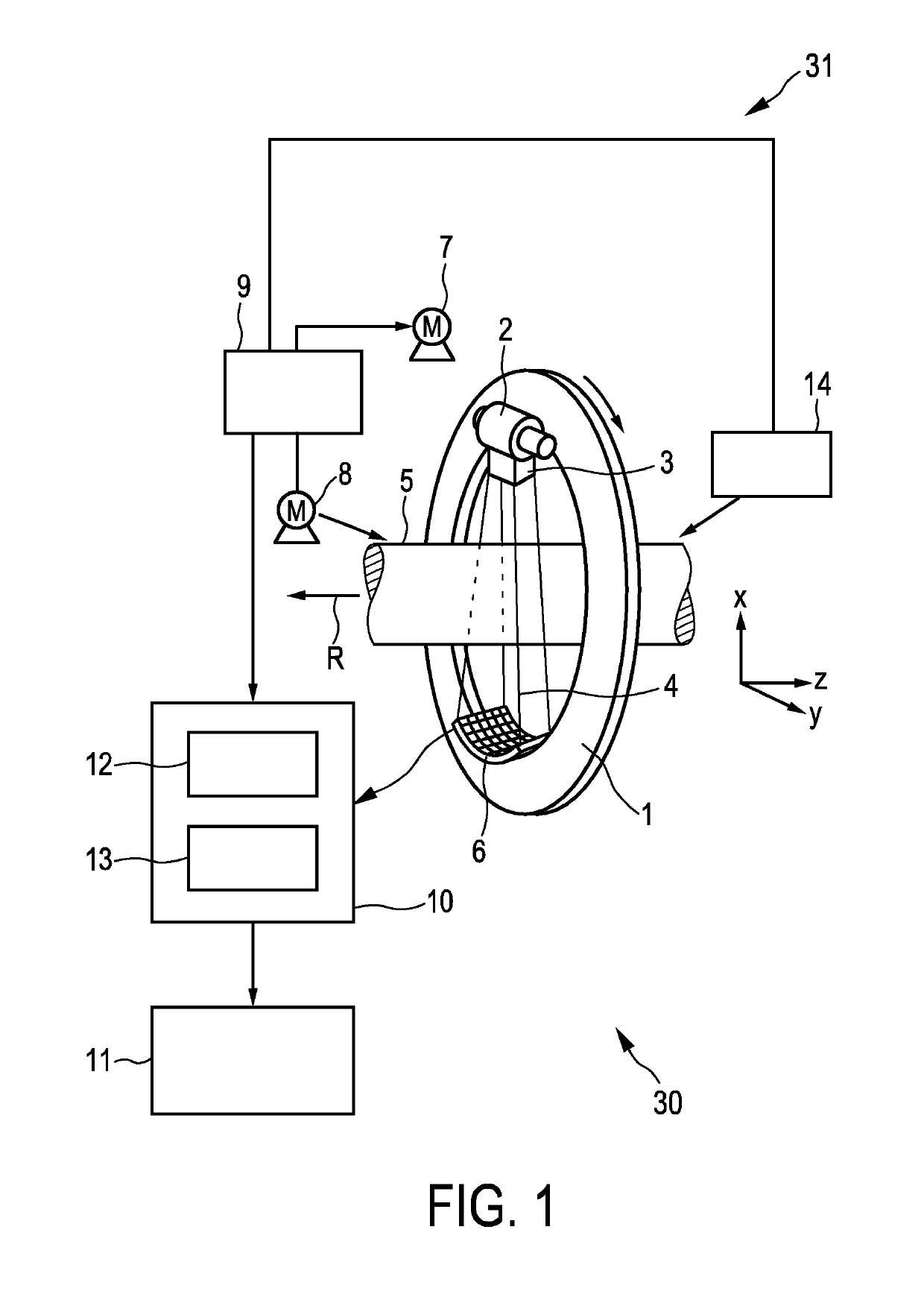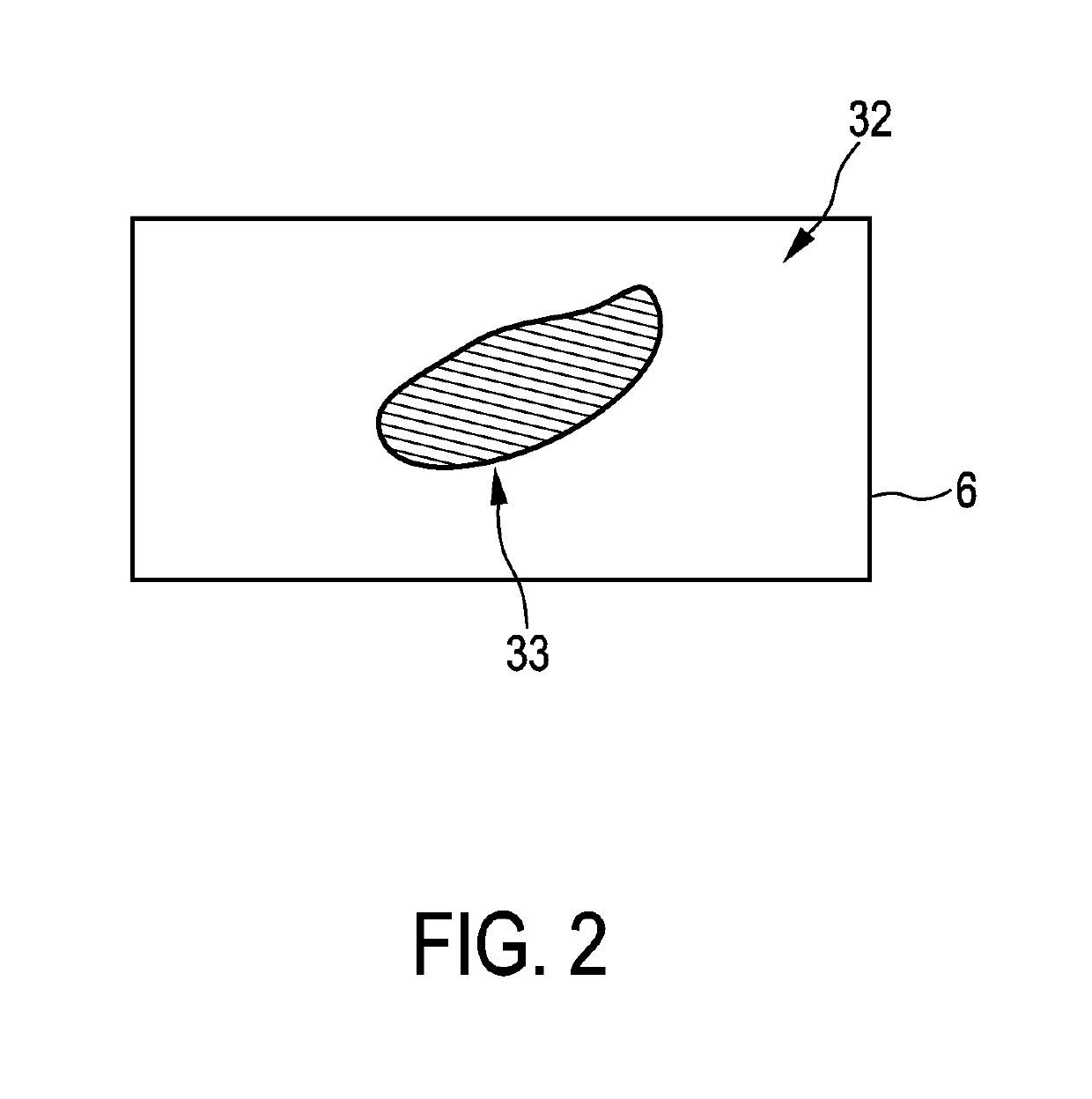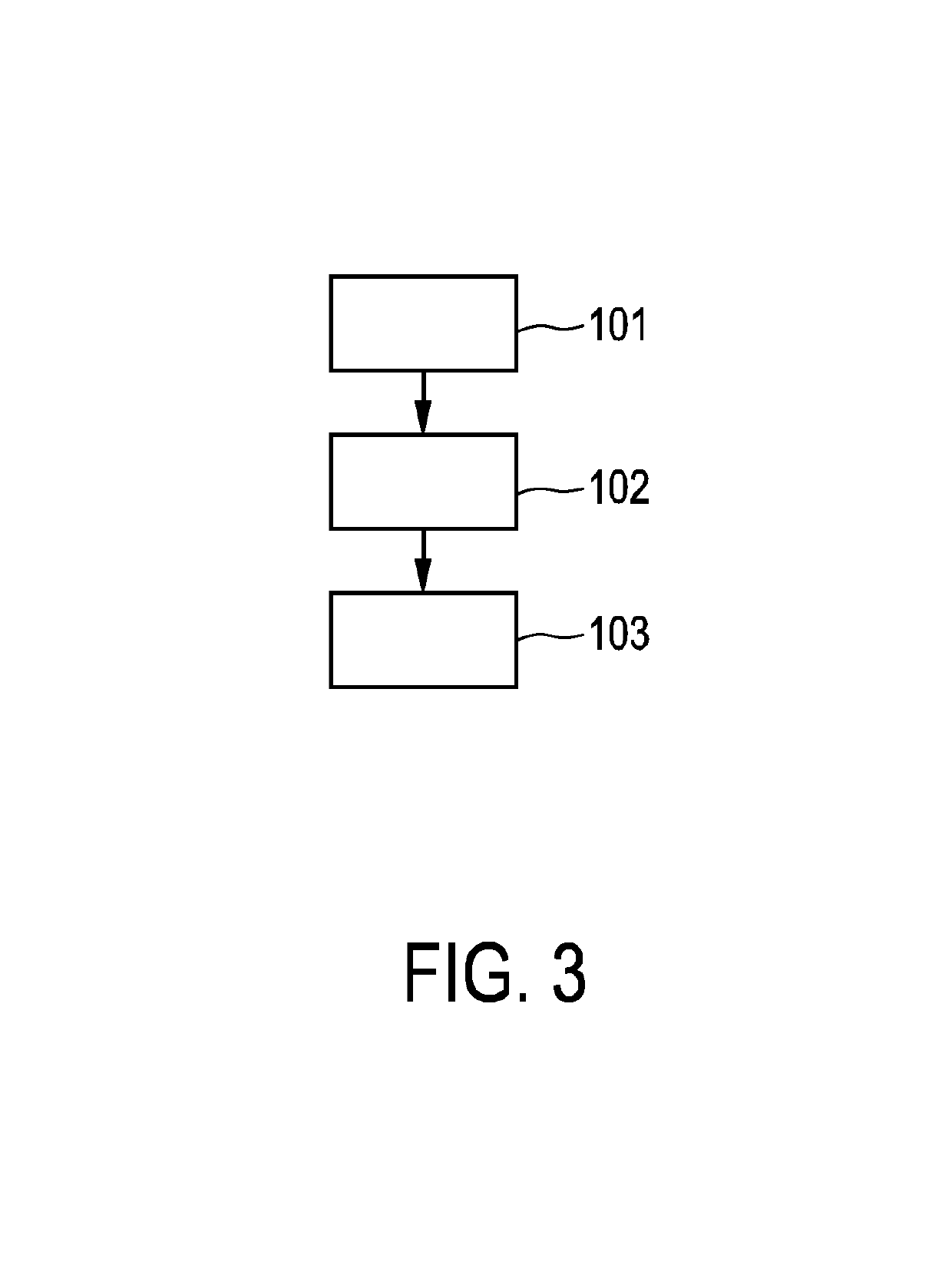[0006]It is an object of the present invention to provide a computed tomography system, method and computer program for generating an image of a subject comprising a contrast agent, wherein the quality of the image can be improved.
[0011]By the scaling procedure, which may be performed in the projection domain and / or in the image domain, different amounts of the contrast agent, which may be present at different times, can be balanced, which allows for an improved quality of the finally reconstructed image.
[0017]The subject is preferentially a living being and the provided sets of spectral projections are preferentially cardiac gated, especially prospective cardiac gated. For performing the prospective cardiac gated acquisition of the spectral projections an electrocardiography signal generated by an electrocardiography unit connected to the subject may be used. By using cardiac gated spectral projections, image artifacts, which may be caused by a cardiac movement, may be reduced, thereby further improving the quality of the reconstructed image. Moreover, by performing a prospective cardiac acquisition of the spectral projections, the radiation dose applied to the subject can be significantly reduced.
[0018]The predefined similarity measure preferentially depends on an average of the intensity values of the respective first image in the respective overlap region. The average may be, for instance, the arithmetic mean or the median or another average. Using this average as a similarity measure leads to an improved image quality, wherein the average of the intensity values of the respective first image in the respective overlap region can be calculated with low computational effort. First images may be regarded as having a same intensity in an overlap region, if a difference between a) a similarity value obtained by applying the similarity measure to the intensities of one of the first images in the overlap region and b) a similarity value obtained by applying the similarity measure to the intensities of the other of the first images in the overlap region is smaller than a predefined threshold. The predefined threshold may be predetermined by calibration or in another way such that the image quality is improved. In an embodiment first images may be regarded as having a same intensity in an overlap region, if a difference between a) a similarity value obtained by applying the similarity measure to the intensities of one of the first images in the overlap region and b) a similarity value obtained by applying the similarity measure to the intensities of the other of the first images in the overlap region are equal.
[0020]In another embodiment the respective region of interest on the detection surface corresponds to a virtual projection of a predefined object of interest within the subject on the detection surface. Preferentially, the projections providing unit is adapted to provide the respective acquisition geometry used for acquiring the respective projection, wherein the image generation unit is adapted to provide an object of interest image showing the object of interest within the subject and to determine the respective region of interest on the detection surface by virtually projecting the object of interest onto the detection surface under consideration of the provided respective acquisition geometry and the provided object of interest image. For instance, if the object of interest is the heart, the region of interest on the detection surface may correspond to a virtual projection of the heart onto the detection surface. Thus, for determining the contrast value being indicative of the total amount of the contrast agent based on projection values of a respective first projection only projection values may be used, which are within the region of interest on the detection surface, wherein the region of interest corresponds to the virtual projection of the predefined object of interest onto the detection surface. The contrast value may therefore be indicative of the total amount of contrast agent in the object of interest only. This can lead to an improved scaling regarding the object of interest and hence finally to an improved quality of an image of the object of interest.
[0021]The image generation unit may be adapted to parallel rebin the first projections and optionally also the second projections before using the first projections and optionally also the second projections for reconstruction, especially before determining contrast values for the first projections. The parallel rebinning can lead to further reduced computational efforts for generating the image.
 Login to View More
Login to View More  Login to View More
Login to View More 


